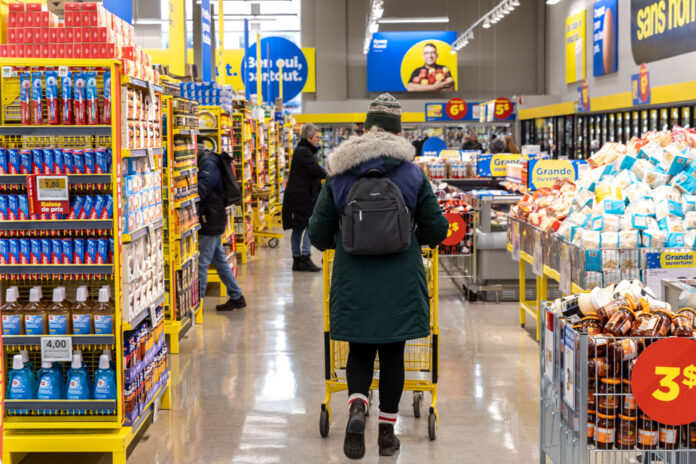It’s not just broke college students who subsist on instant Ramen noodles, spaghetti, or pre-prepared sauces. A sign that the majority of consumers want to save money, these food categories are experiencing a meteoric rise in popularity at the grocery store where nearly six out of ten items are sold on promotion. Never seen.
“A proportion of 57.7%, we have never seen that! We have never seen so many promotional activities,” exclaimed Francis Parisien, senior vice-president, SME sales Canada for NielsenIQ, during a conference entitled “The consumer at the time of choice”, presented as part of an event organized by the Conseil de la transformation agricole du Québec (CTAQ), Thursday in Montreal.
“In 2008, at the end of the last great recession, 36% of the items sold were on promotion,” he explains. Shortly before the pandemic, this proportion was generally below 50%. It decreased significantly during COVID. Grocers then limited promotions to avoid shortages. Two years ago, discounts returned to the landscape. The proportion therefore increased to 54.7% then to 55.4% in 2022.
And according to the figures presented by NielsenIQ, many Quebecers put spaghetti topped with prepared sauces or Asian noodles on their plate. Nearly 50% of households are currently purchasing sauces to enhance their Italian dishes, an increase of five points from last year. Instant Asian noodles are found in the pantries of 31 percent of families, a three-point increase.
Retailers seem to have understood this. The mountains of packets of ramen noodles displayed in plain sight in the displays at the entrance of certain low-cost brands clearly illustrate this craze. For Mr. Parisien, this is the symbol of the low-cost solution sought by consumers.
“And in pasta, we have never seen an increase like that,” says Mr. Parisien bluntly, adding rice and ready-to-serve canned soups to his list.
“My colleagues in the United States even tell me that people add water to ready-to-serve soup to make more. Clearly, people are looking for solutions [to save money]. »
Even canned dumpling stew is seeing a resurgence in popularity with growth of 43%.
The choice of cuts of meat also proves that consumers want to avoid having too high a bill. Nearly 25% of Quebecers opt for cheaper solutions. “We see more chicken drumsticks than breasts, more cubes of stew than flank steak,” observes Francis Parisien.
And those who question the relevance of promotional flyers should know that they remain the “first destination” for 86% of consumers looking for deals.
This interest does not seem to be slowing down since 18% of Quebecers plan to use this tool even more in the next 12 months. Currently, 56% of people view the paper version, 64% online, and 22% use their apps.
While they browse the aisles looking for inexpensive foods, consumers are also looking to treat themselves. “We cannot prepare all our meals,” emphasizes Mr. Parisien. We are seeing growth in a category that hasn’t seen much of it recently: ready-to-eat. »
However, there are losers in the equation: restaurants. Nearly half of consumers have reduced their trips out to eat, while 18% are having pizza or other meals delivered less often. “You might eat less sushi at restaurants, but you buy more at the grocery store. »















